Today, bedding sets made from natural cotton fabrics are especially popular. However, it is not always easy to make a choice among the huge variety, since each type of textile has its own external and operational qualities.
Recently, buyers have been giving preference to such types as percale or poplin. What is better for bed linen will be discussed below.
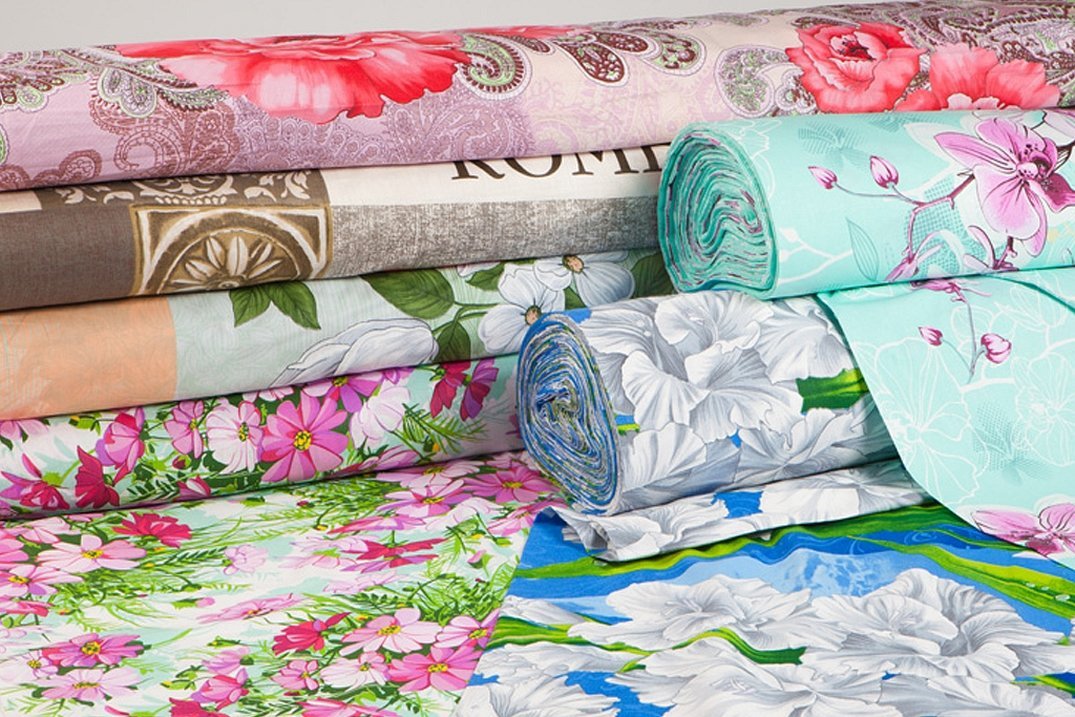
Choosing bed linen: main characteristics
To make the right choice in favor of one material or another, you should delve into the study of the basic properties of fabrics.
Percale is a fabric that comes from India. The name is translated from Persian as "rag". The fabric is made from natural cotton fibers, which are combed in a certain way and only then the material is woven. Percale is distinguished by its plain weave, due to which the fabric is highly durable. This is why this material was previously used to make ship sails. Clothes and bed linen were sewn from a thinner type.
For your information! Previously, parachutes were made from percale, which confirms the high strength of the material, as well as products made from it.
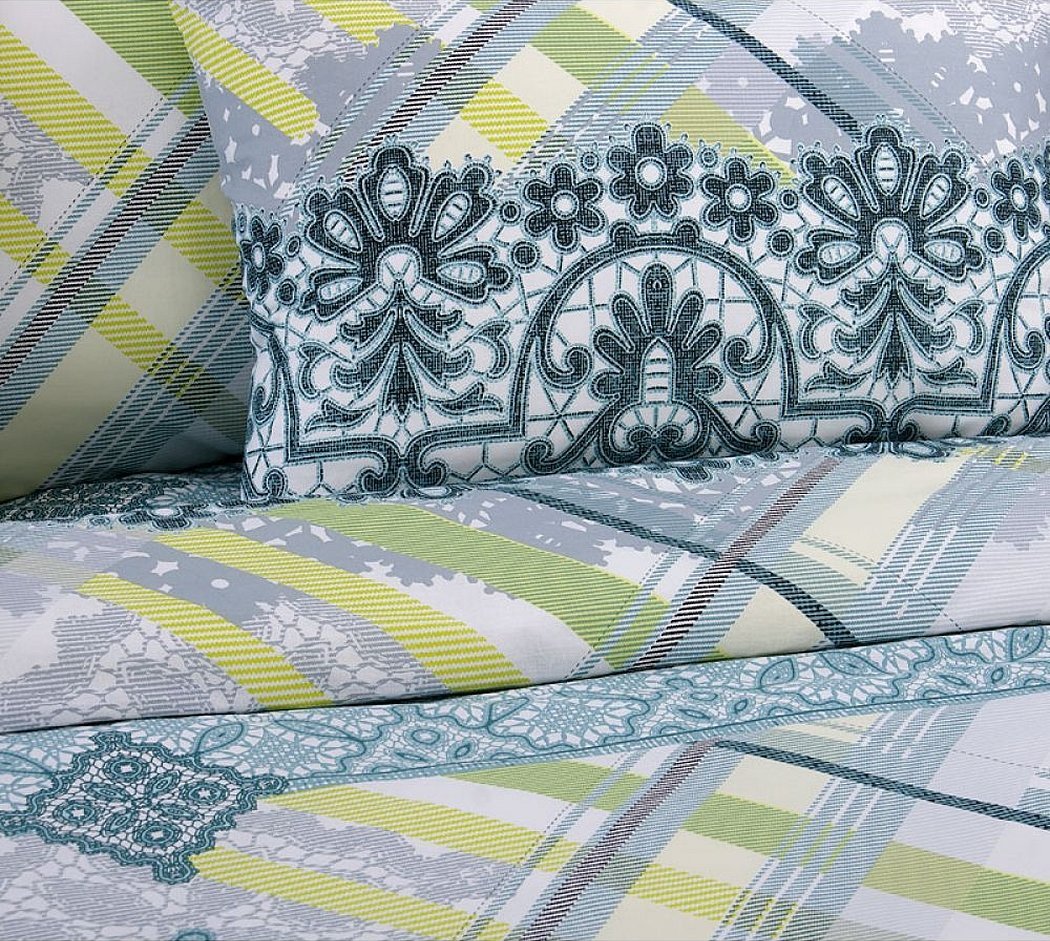
Poplin has been widespread since the 14th century. Translated from Italian, it means "papal". The fabric owes its name to its place of origin. Poplin was first made in Avignon, where the Pope's residence was located. Initially, it was made of silk, the back side was plain, and the front side was covered with an ornament.
Please note! Today, poplin is produced by plain weaving of cotton or synthetic fibers with interwoven threads of different thicknesses. This causes the presence of small ribs on the surface of the fabric. Weaving with synthetics in the composition, in turn, negatively affects the characteristics of the finished fabric, making it difficult for the sheets or duvet cover to breathe.
Poplin is often used for sewing men's and women's clothing, curtains, towels. It comes in different types. It may contain silk or wool fibers. This type of fabric is usually used in the manufacture of high-quality sheets, pillowcases and duvet covers.
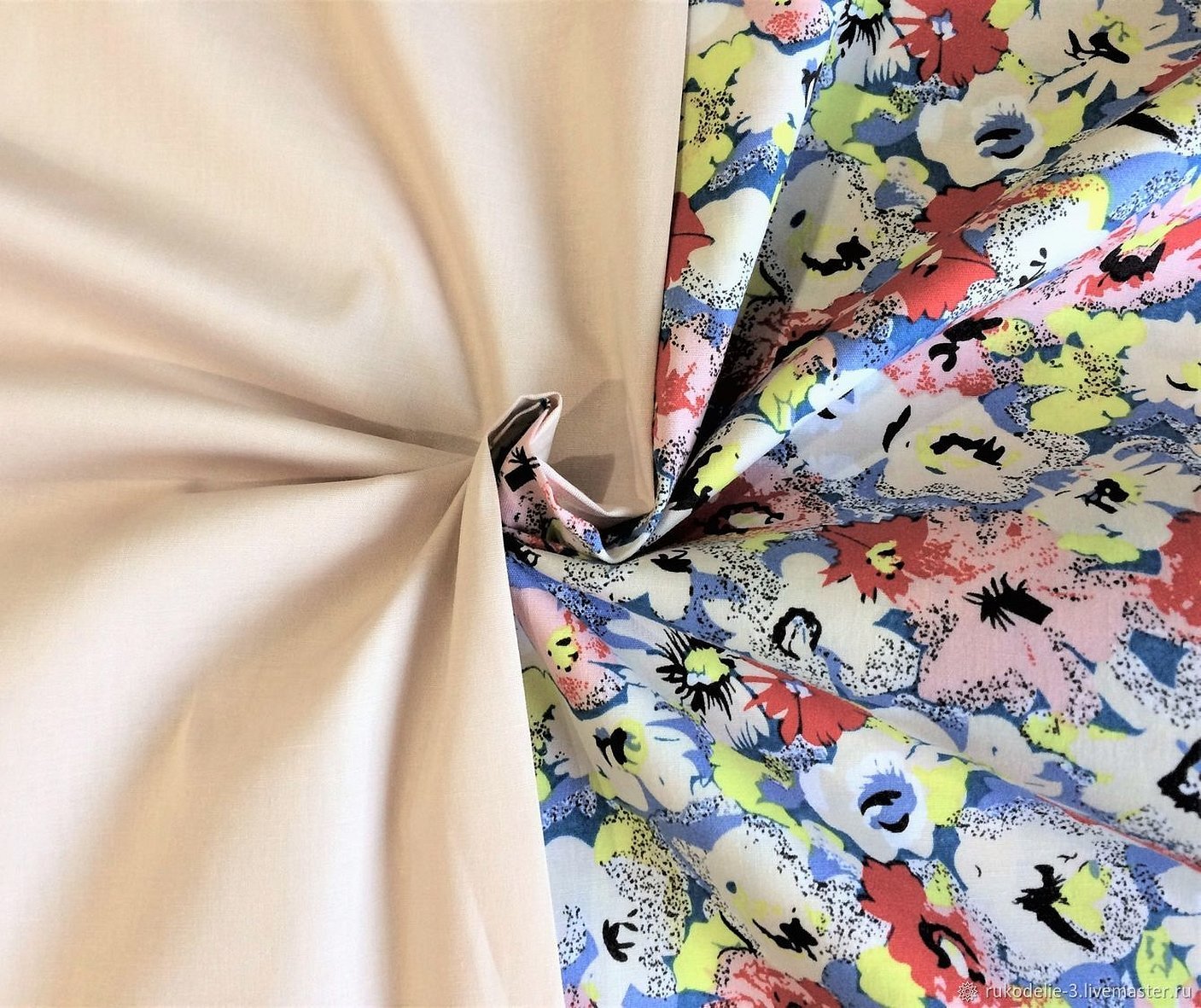
The main characteristics of bed linen material include:
- High performance qualities. The fabric must be wear-resistant. For example, percale bed linen will last at least 7-8 years, and poplin - 4-5 years.
- High density ensures wear resistance. The density of percale and poplin is almost the same - up to 150 g/m².
- Multiple washings and ironing should not affect the quality of the fabric in any way; it remains durable and bright.
- Percale or satin does not form pellets on the surface, does not deform, does not stretch or shrink.
- When producing bed linen material, untwisted cotton fibers should be used, due to which the surface of the fabric is soft and smooth.
- Percale is able to maintain body temperature. Products made from it do not cool in cold weather and allow the skin to breathe in hot weather.
- Ease of care. Percale, for example, wrinkles easily and requires high-quality ironing and steaming.

Many people are interested in the difference between percale and calico. The fundamental difference is the density of the threads: percale has a density of up to 150 g/m², while calico has a density of up to 125 g/m². The fabrics also differ in their service life and fading after several washes. In this case, percale is superior to calico: it will last longer and retain its original shades.
Comparison of technical characteristics and properties of fabrics
An analysis of the technical characteristics of each type of material allows you to choose the material that best suits your preferences based on your wishes. Below is a description of common types of cotton textiles.
Calico
This is one of the most well-known types of fabric for bed linen. The material is a plain weave with a relative density (up to 160 g / m²), which provides it with strength and durability. Two types of calico are used for the manufacture of bed linen: bleached or plain-dyed.
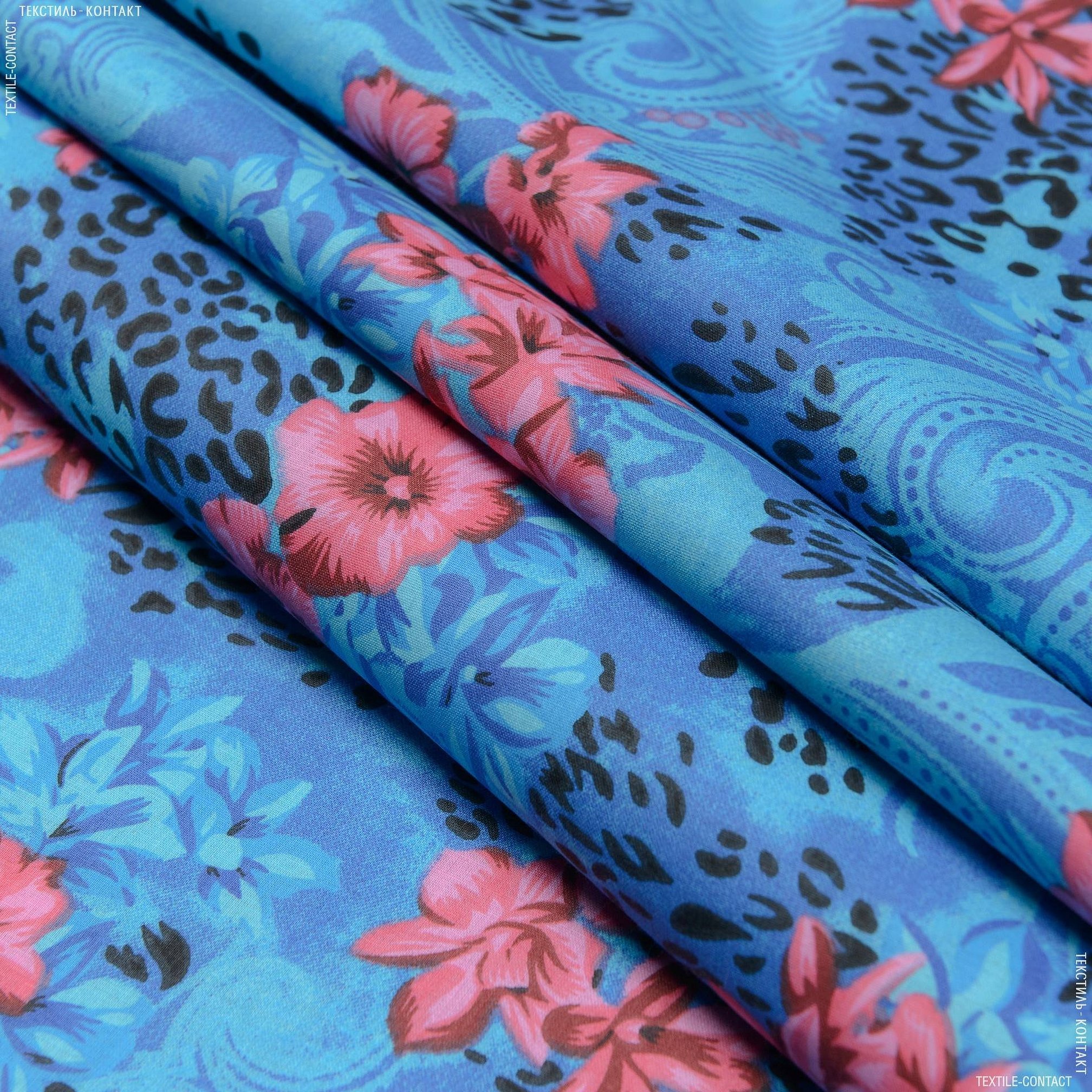
Please note! For public institutions, a more durable but coarse material is used. For household purposes, bed linen made of calico is made with the interweaving of thin and durable fibers; this is the highest quality and most expensive luxury option.
- "Ranfors" is one of several variations of calico that is more reminiscent of poplin.
- "Standard", "Comfort", "Light" are fabrics with different density (from 125-110 g/m²), differ in softness, smoothness of the outer layer. All options have sufficient strength and almost imperceptible shrinkage.
The finer and denser the weave of the threads, the higher the quality. As a result, the cost of the fabric also increases.
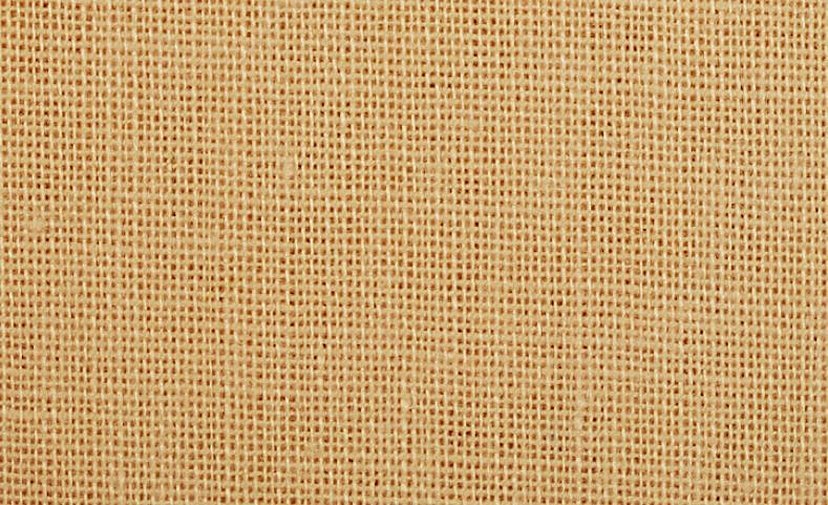
Calico bed linen sets are affordable and practical. When choosing between percale or calico, it is worth noting that calico does not fade, absorbs moisture, does not shed, and retains heat well. The resistance of this material to bacteria makes it possible to use it for sewing linen for children's beds.
The disadvantages include some roughness and looseness of the fabric, visible thickening in the threads, which creates a feeling of roughness. Calico wrinkles a lot, and if it contains synthetic fibers, it can roll up.
Percale
Percale is often confused with poplin due to its similar appearance. The fabric is made from high-quality cotton fibers using plain weave. To avoid pellets, the fibers are treated with a special compound, resulting in a smooth and silky fabric.
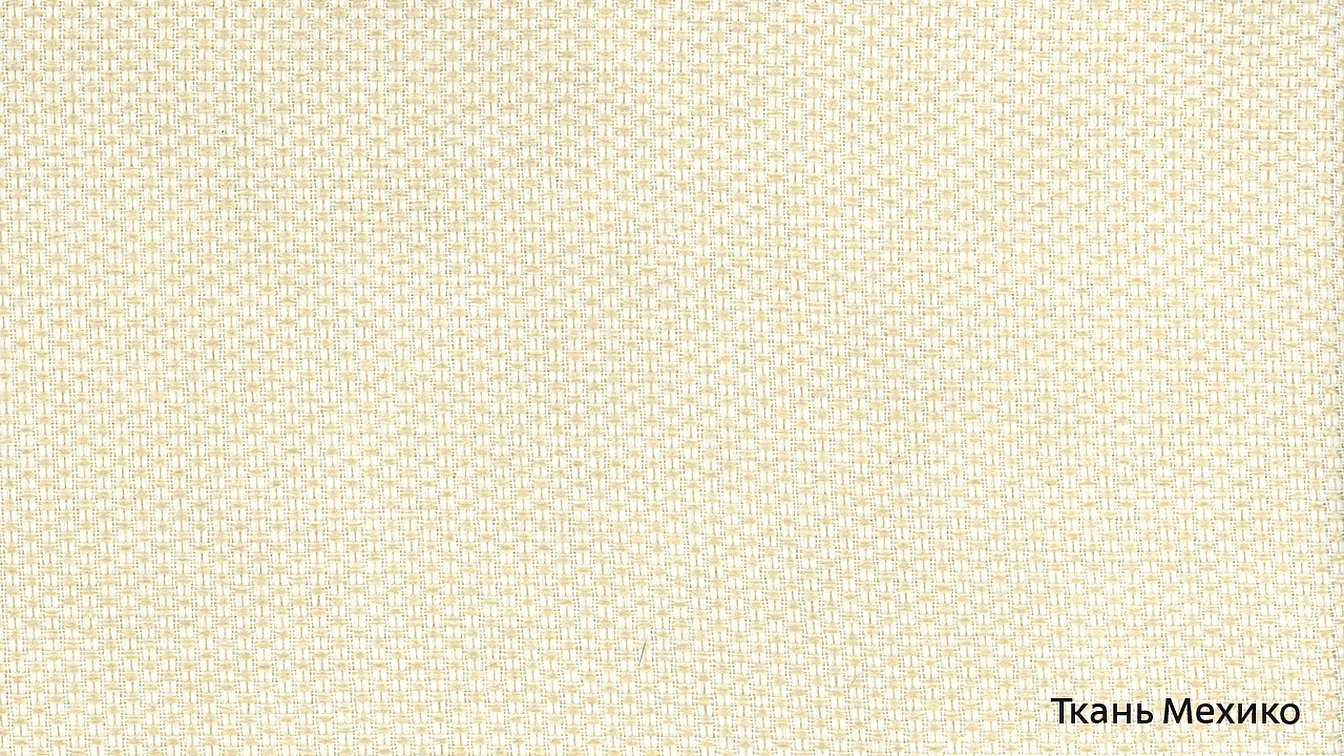
The material is wear-resistant and can withstand up to 1000 washes. Dirt comes off easily even at low temperatures. When choosing which is better - percale or calico, it is worth remembering that the thread density of the former is higher.
Important! After repeated washings, the fabric does not lose its appearance and remains soft. Since the material is difficult to iron, experts recommend adding conditioner to the water during the rinsing procedure.
When comparing what is better for bed linen - percale or satin, it is worth considering the greater durability of percale products.
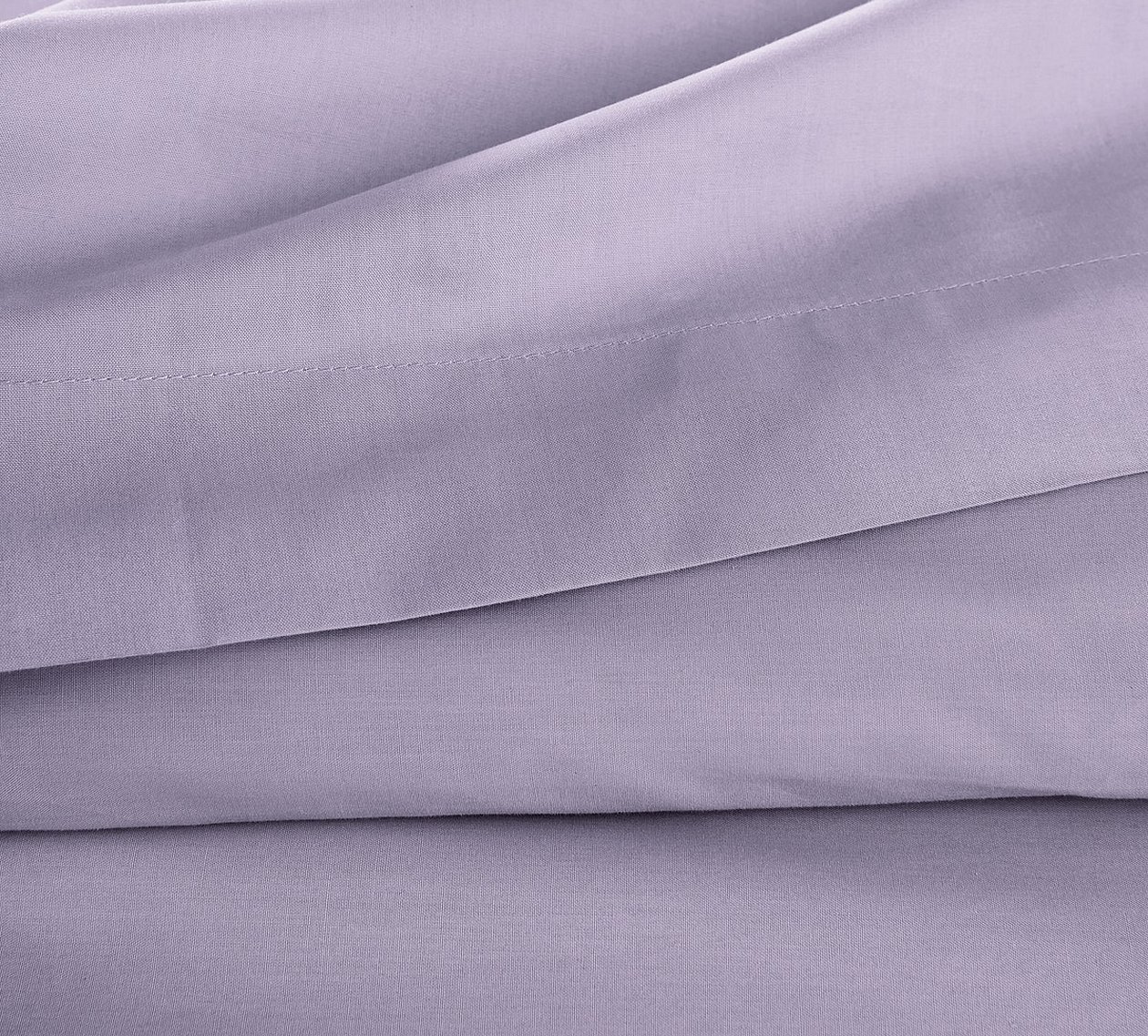
Poplin
This material is a worthy competitor to percale or calico with a dense structure in terms of practicality, and satin in terms of softness. According to the type of dyeing, the material can be plain-dyed, bleached, printed or variegated.
The peculiarity of manufacturing is considered to be the use of threads of different thickness. The base consists of thin fibers, through which thicker ones are passed. Such weaving allows to create a thin and at the same time tear-resistant fabric.

Most often, poplin is used to sew pajamas, nightgowns, and children's clothing. When comparing which is better - percale or poplin, it is worth noting the unpretentiousness and ease of care for both fabrics. The main advantage is that even after 200 washes, the product retains its shape. The cost of a set of poplin underwear is almost the same as that of calico, while it is softer and more beautiful.
Important! Poplin is cheaper than percale. But its service life is also significantly shorter.
Satin
If the main criterion for choosing is the softness and delicacy of the fabric, then, of course, you should give preference to satin. It consists of 100% natural high-quality cotton. The method of weaving the threads is called satin or satin.
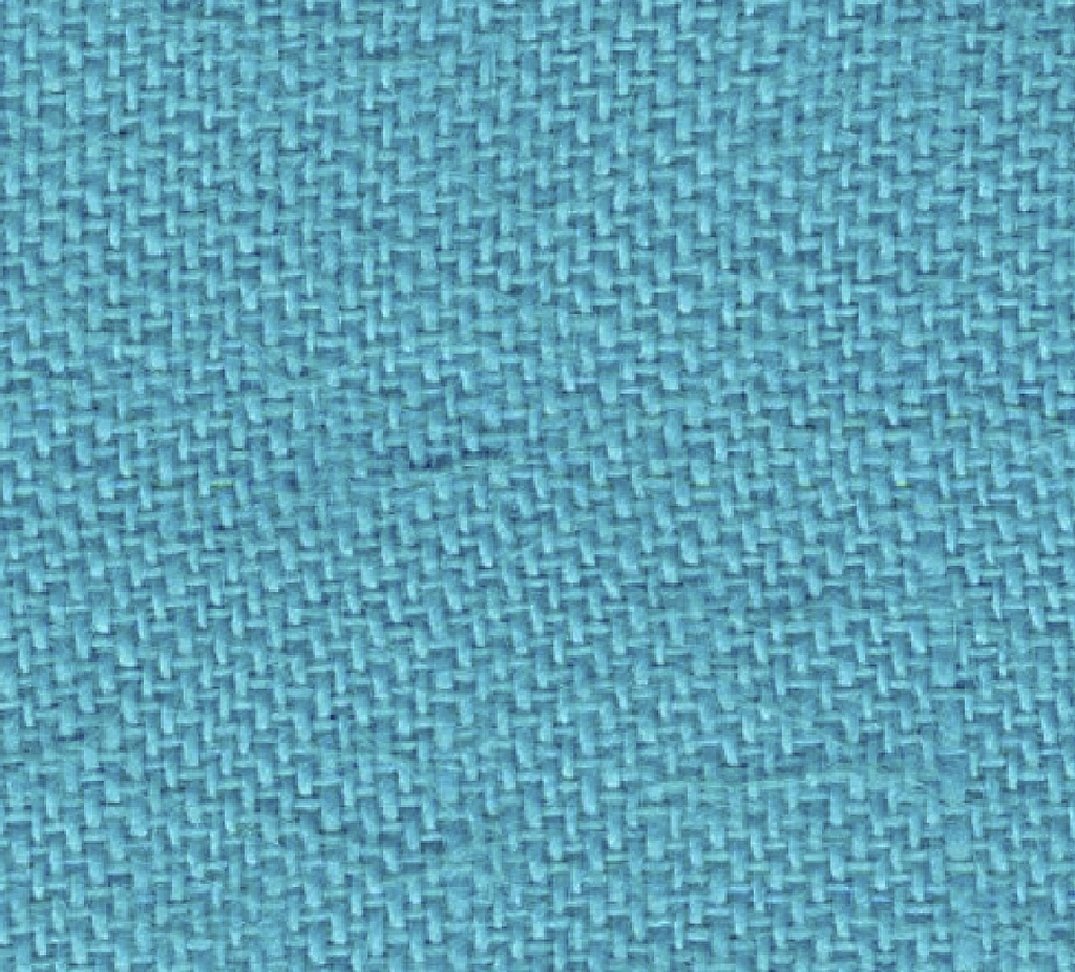
In the finished fabric, weft threads predominate on the surface, creating a diagonal rib. Satin with a density of 80 to 130 g / m² is available for sale. After mercerization (treatment with sodium hydroxide), the fabric acquires even greater strength and color fastness.
Please note! The glossy shine is present only on the front side, on the back the fabric is matte with a slight roughness. It is this characteristic that prevents the sheet from sliding off the bed.
The difference between satin bed linen: it absorbs moisture well, retains heat, and removes static electricity. Products made from this material are designed for long-term use - up to 8 years. Satin is the most expensive type of cotton textile.

How to wash calico, satin, poplin
Strictly following the care instructions for a particular type of product will extend its service life. For cotton fabrics, the following recommendations should be followed:
Calico
Snow-white bedding is washed at a temperature of up to 60°C using powder for natural whites. Colored linen is washed at a temperature of no higher than 45°C, after being turned inside out. Spinning should be done at 600-800 rpm.
Please note! Since calico is difficult to iron, it is better to do it while the linen is damp. If the product has embroidery, it is ironed from the inside out, in all other cases - from the face.
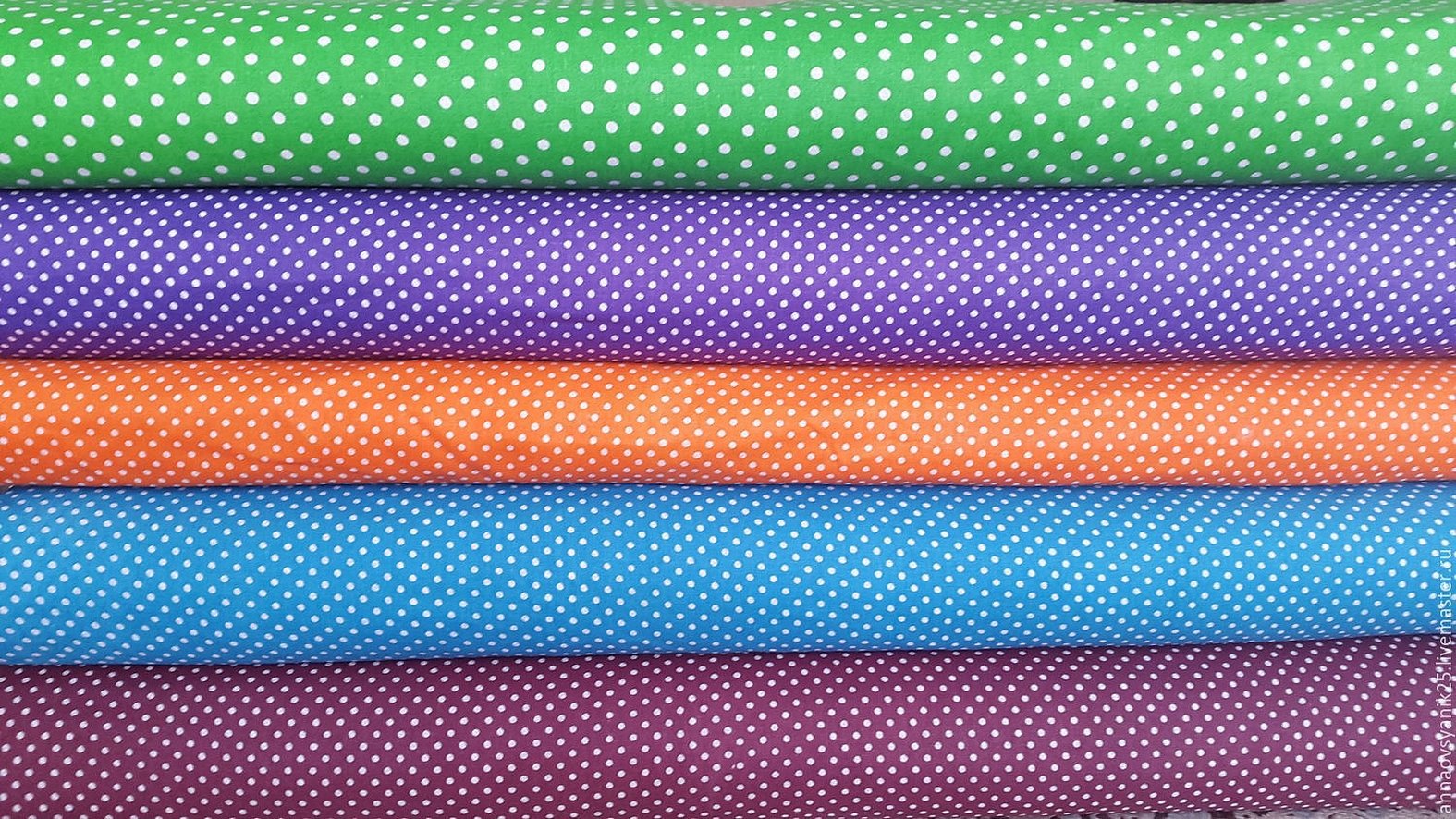
Satin
Satin bed linen is washed at a temperature of 40-60°C. When choosing a washing powder, you should pay attention to the content of bleaching components, which can negatively affect the appearance of colored fabrics, with a pattern, embroidery or print.
The exception is pure white textiles. After washing, it is recommended to additionally rinse the laundry in cold water. In the machine, it is advisable to select the minimum spin so that the fabric does not shrink. It is better to iron the items in a semi-dry state.
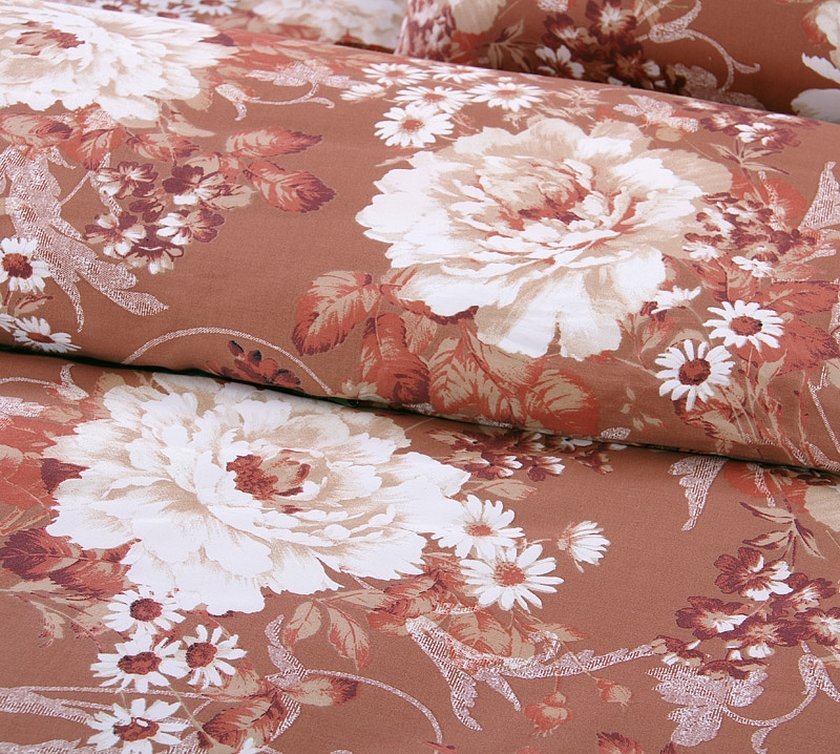
Percale
If items made from it are washed for the first time, the water temperature should not exceed 20°C. For subsequent washes, you can set the temperature indicated on the labels, but not more than 60°C.
It is not recommended to starch a percale sheet, as this procedure makes it absorb moisture worse and less comfortable. It cannot be washed simultaneously with other types of fabrics, to avoid deformation of the fibers. If the machine has an additional rinse function when washing percale, it is advisable to turn it on.
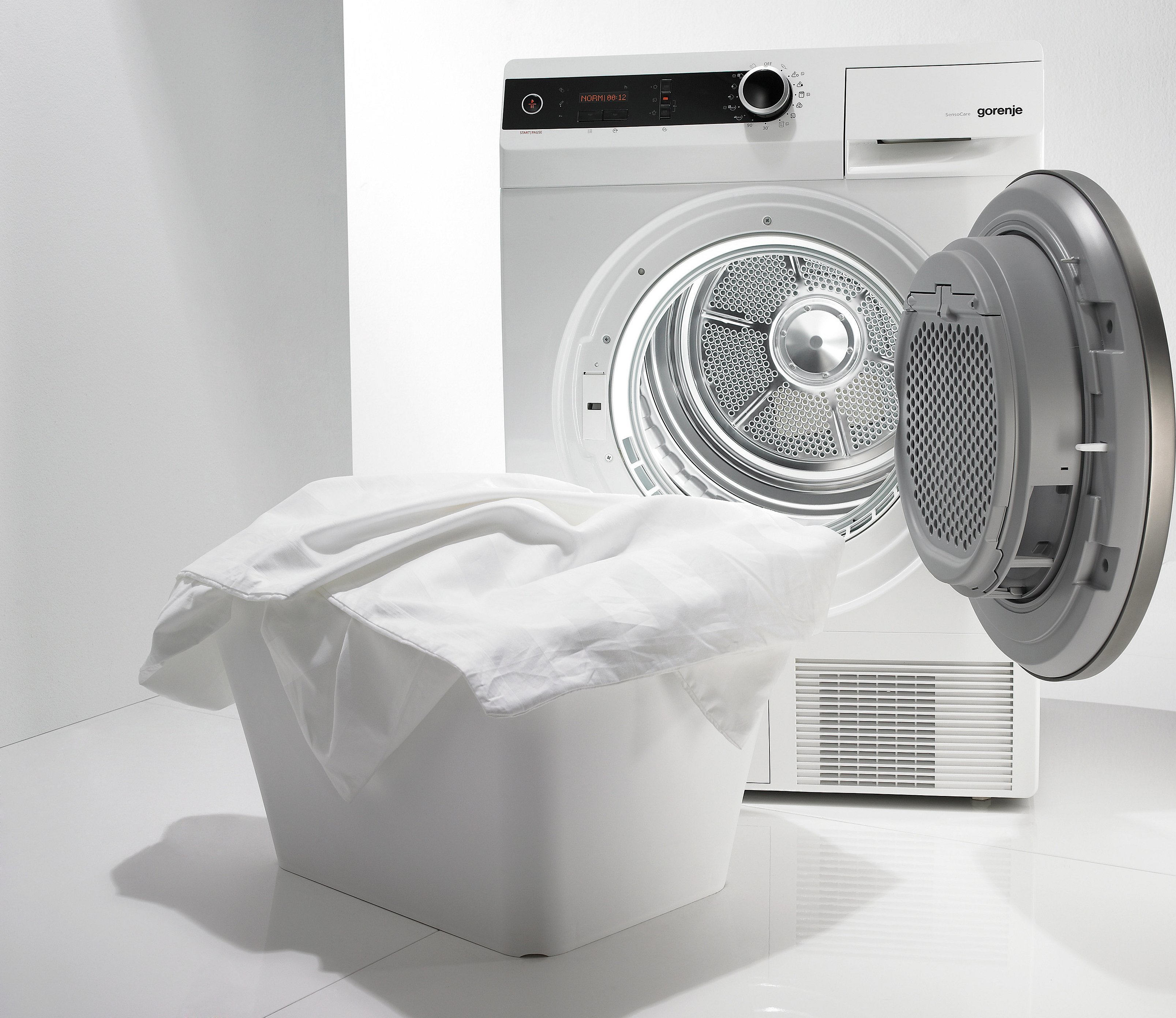
Poplin
In case of minor contamination, it is recommended to wash poplin products by hand. Fill a basin with warm water (30-40°C) and dissolve the powder in it. Immerse the product in the liquid and soak for 20 minutes. Wash with gentle movements, paying special attention to areas with visible contamination. Then rinse the product twice with cool water and, after slightly squeezing, hang it out to dry.
Machine wash poplin at 40°C. If the fabric contains synthetic, silk or wool threads, wash at 30°C on a gentle cycle, and spin at 600 rpm.
If all recommendations are followed, the manufacturer guarantees a long service life and comfortable feeling when using cotton underwear.
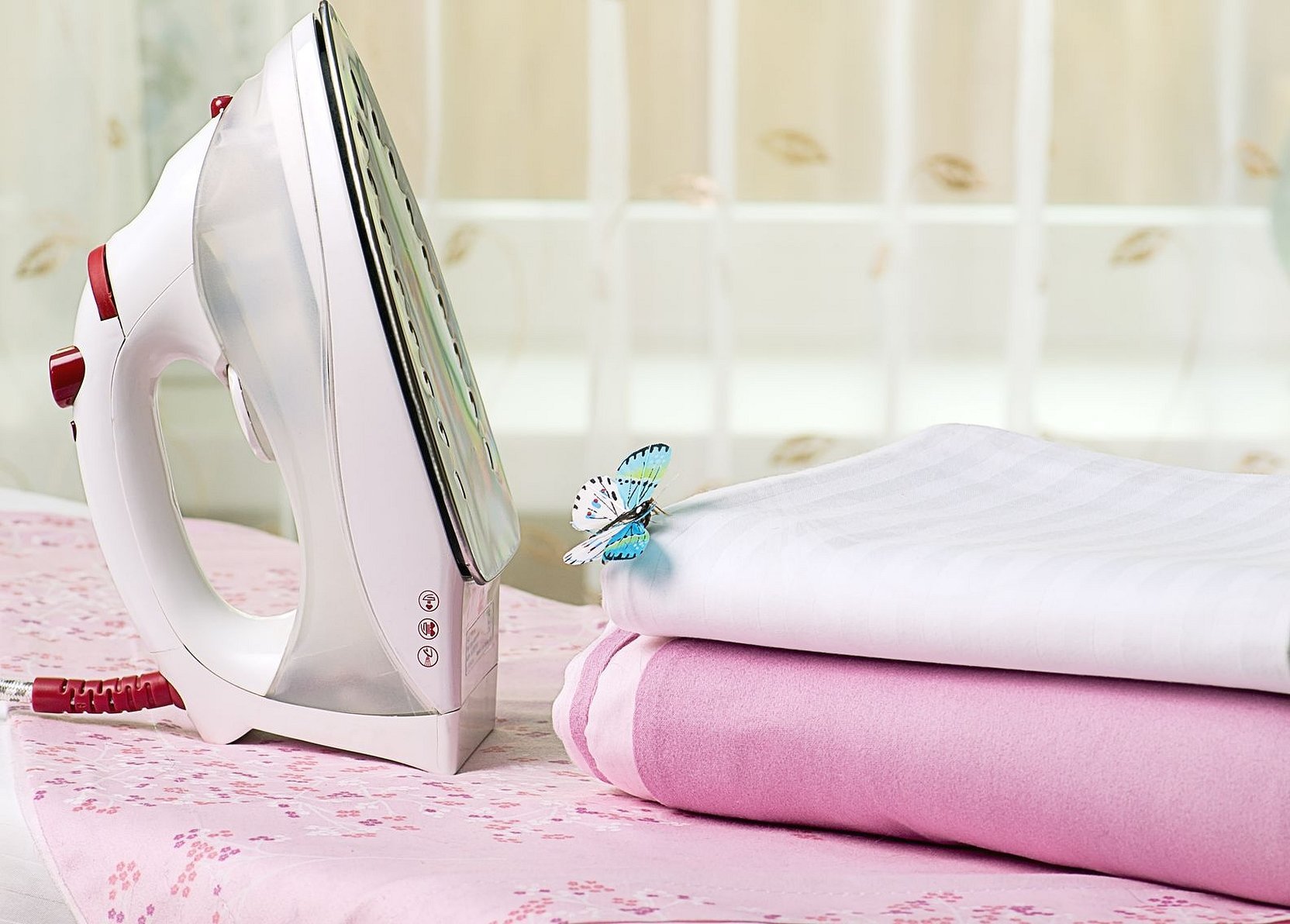
Reviews
Reviews on what to choose for sewing bed linen vary greatly:
Irina, 38 years old
"Our family has a small income, so buying good bed linen is a problem. But from experience I can say that it is better to save up money and buy percale. I had a sad experience with cheap satin and calico, poplin, of course, lasted longer. But I simply fell in love with percale: it does not wash out, remains the same color, and most importantly, does not tear."
Olga, 30 years old
"I like poplin: it doesn't wrinkle, it's pleasant to the body, lightweight, natural composition, you can sew bedding for newborns. Although there are allergy sufferers in the family, there has never been a reaction to bedding sets. I think there is no point in paying more money for the same quality."
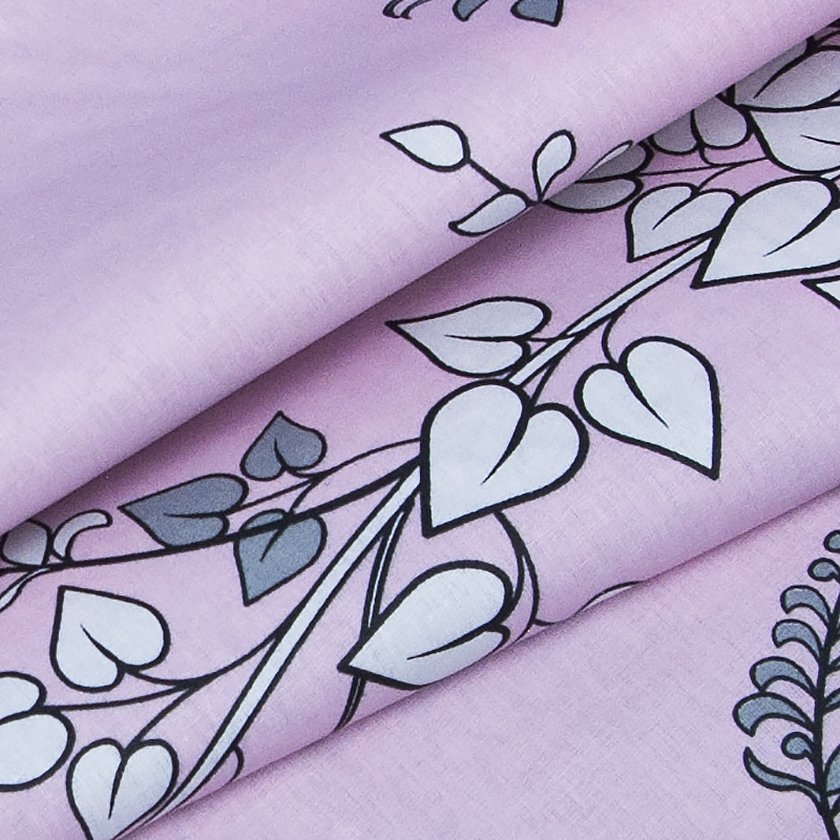
Katerina, 40 years old
"I've tried many sets of bed linen in my life, some of which didn't last even five washes. I settled on poplin and percale. I don't even know which is better, I have to deal with the disadvantages of each. Poplin is less durable, and percale needs to be ironed, otherwise it won't look the same."
All materials with a completely natural composition are hypoallergenic, pleasant to the touch and will last for many years. It is important for the buyer to understand how to correctly distinguish the difference between fabrics, otherwise unscrupulous sellers will play a cruel joke, changing labels, markings, passing off a less valuable product as an expensive one.




